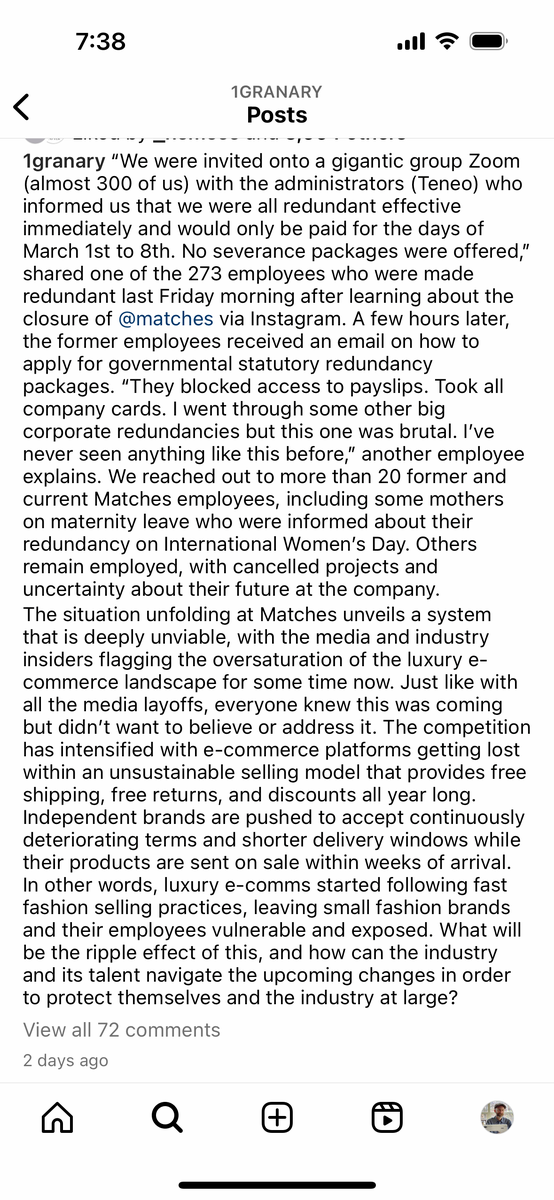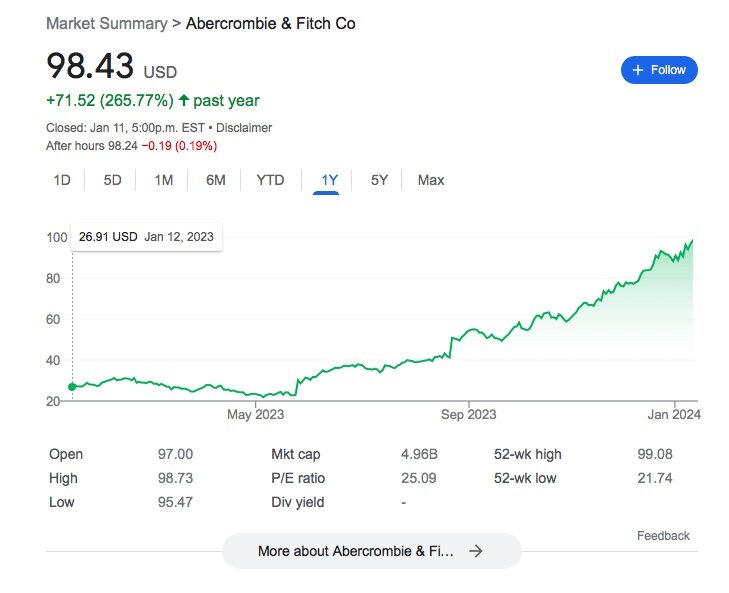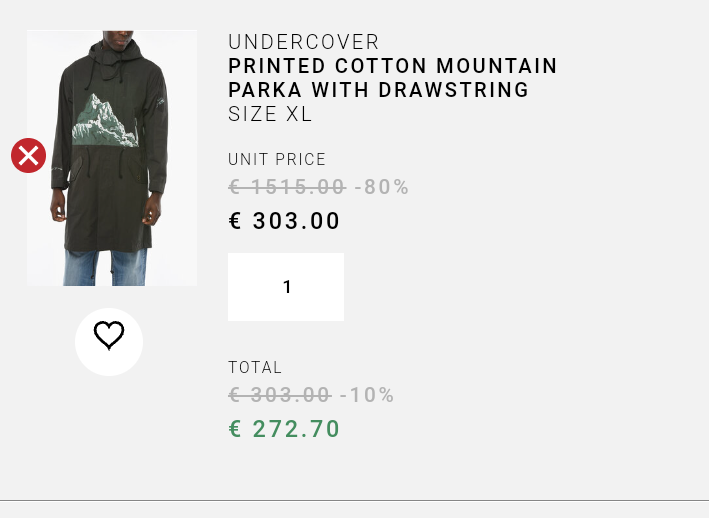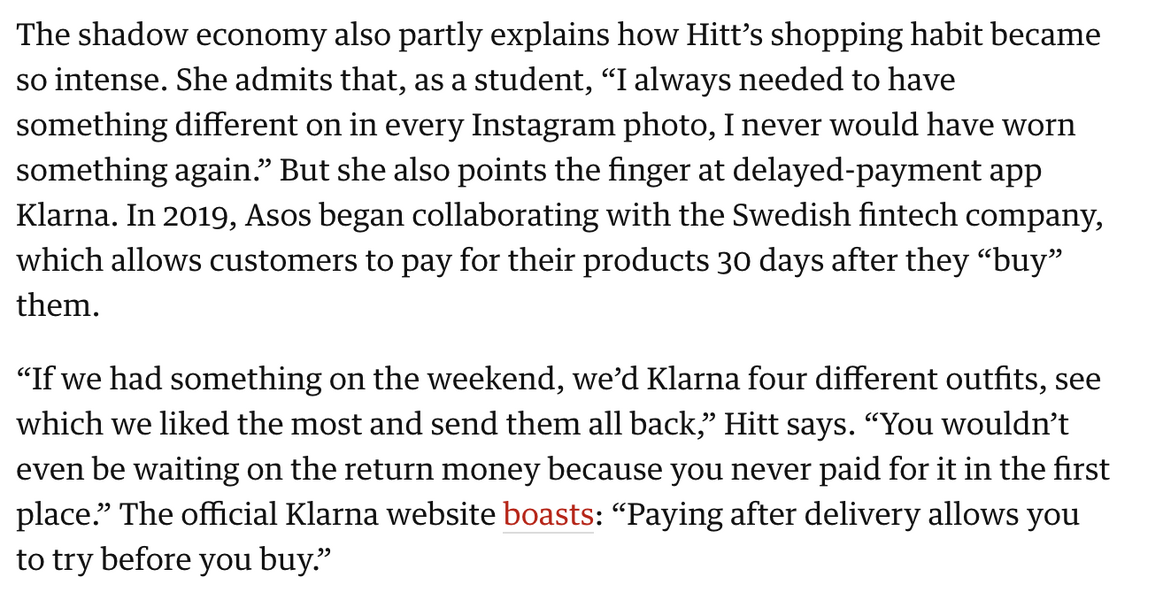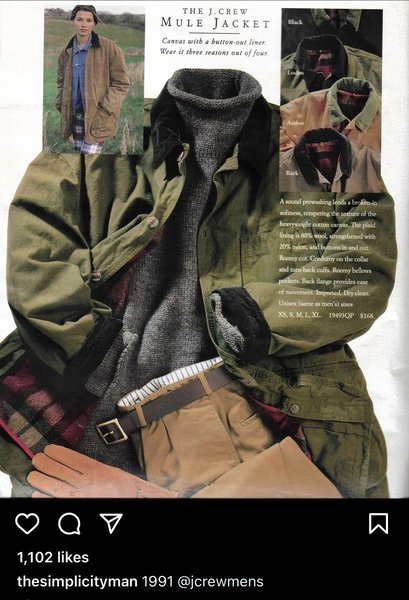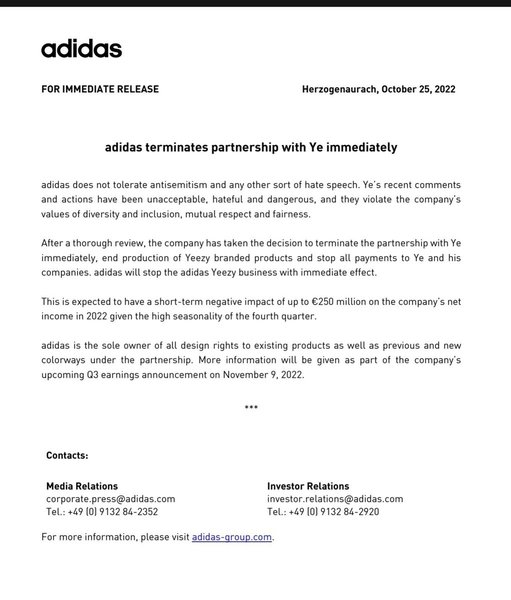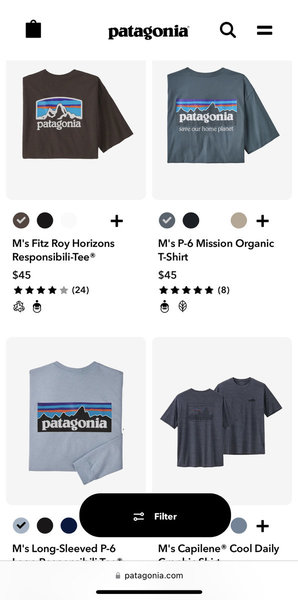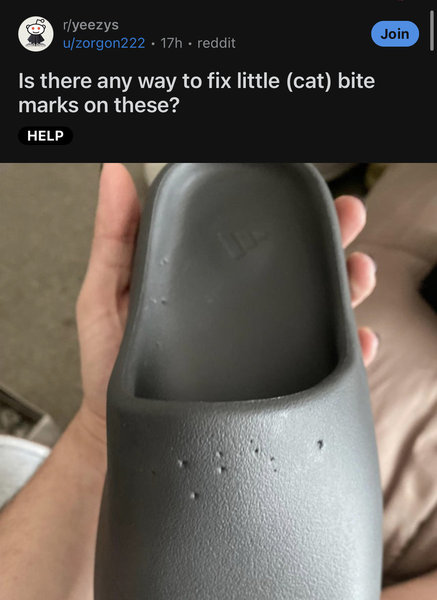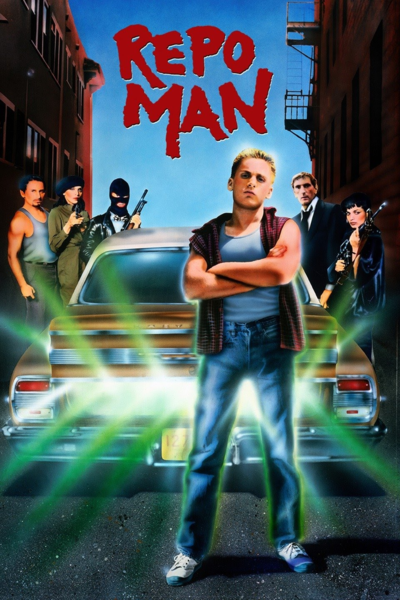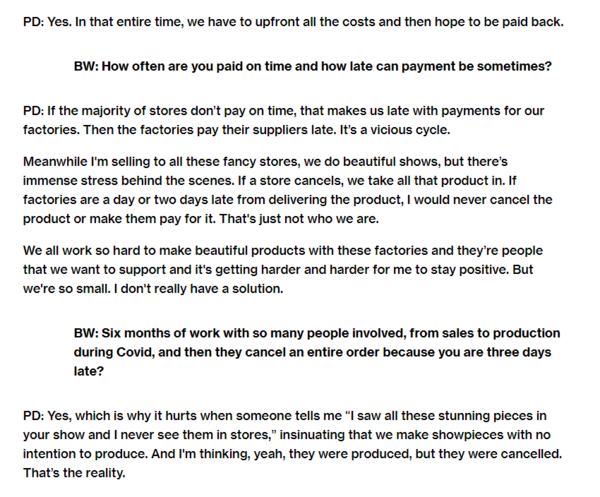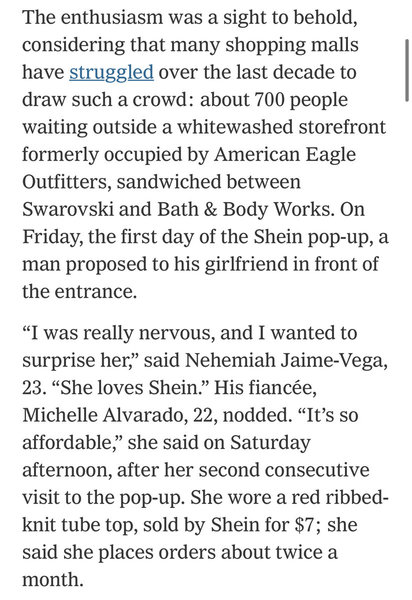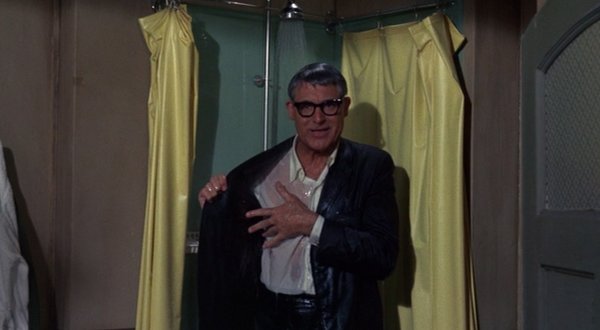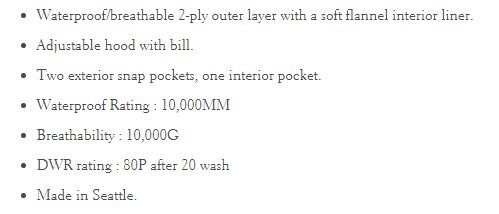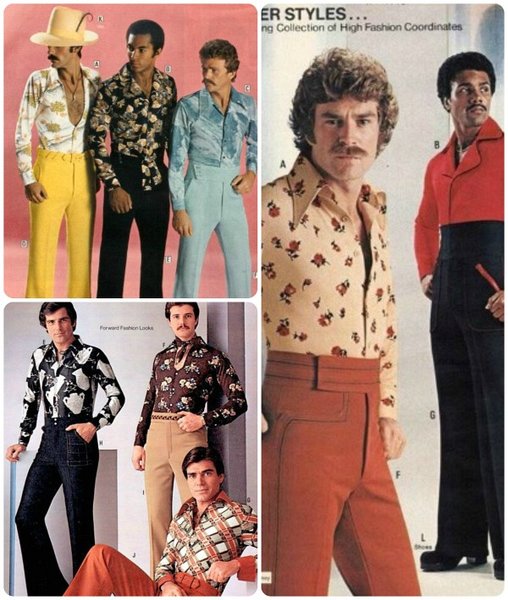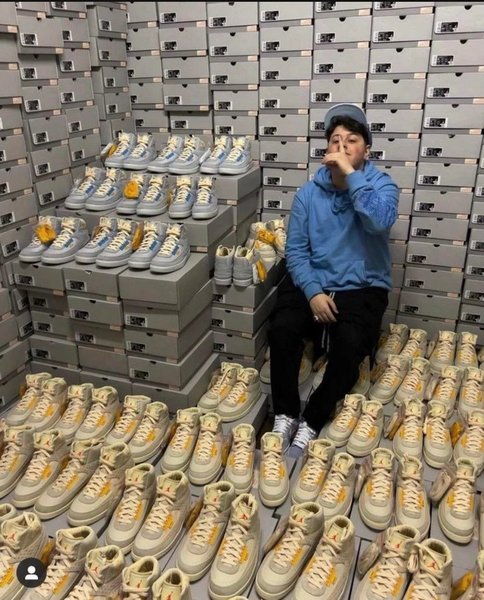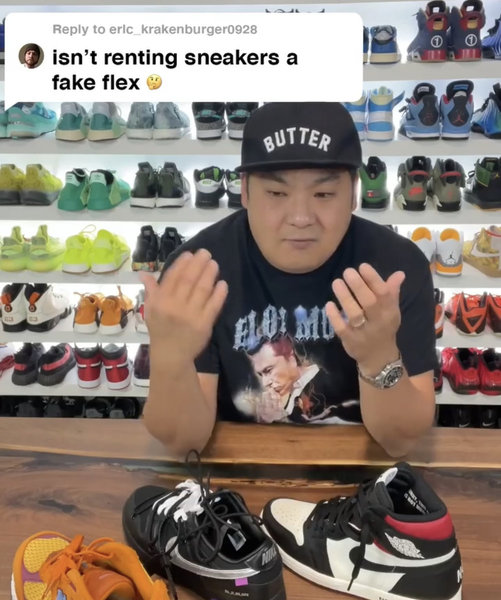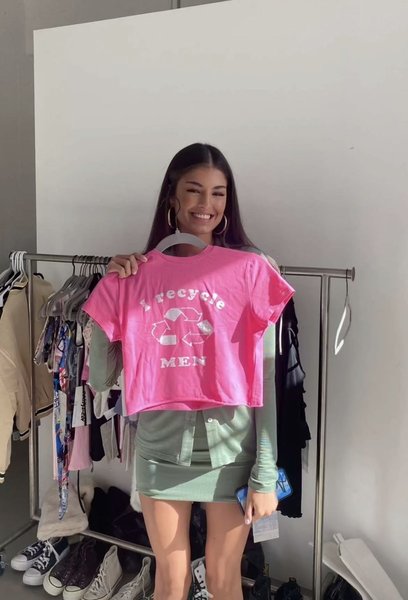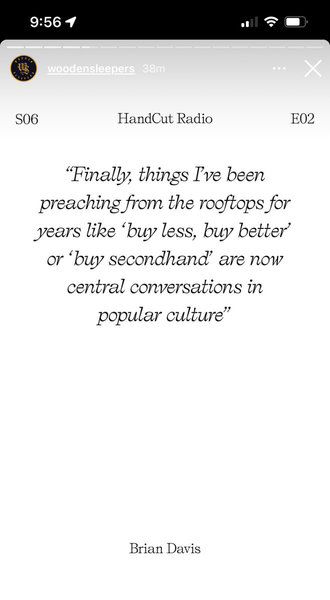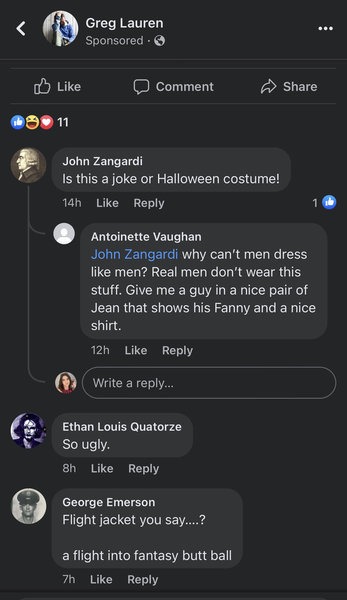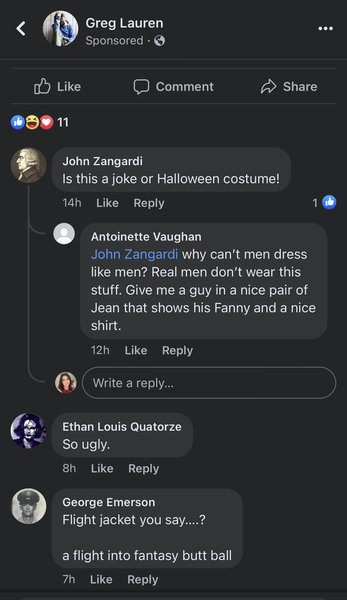-
- Men's Style
- Classic Menswear
- Streetwear and Denim
- Preorders, Group Made-to-order, trunk shows, and o
- Menswear Advice
- Former Affiliate Vendor Threads; a Locked Forum.
- Career and job listings in fashion, mens clothing,
-
- American Trench
- AMIDÉ HADELIN
- Archibald London
- The Armoury
- Arterton
- Besnard
- Canoe Club
- Capra Leather
- Carmina
- Cavour
- Crush Store
- De Bonne Facture
- Drinkwater's Cambridge
- Drop93
- eHABERDASHER
- Enzo Custom
- Epaulet
- Exquisite Trimmings
- Fils Unique
- Gentlemen's Footwear
- Giin
- Grant Stone
- House of Huntington
- IsuiT
- John Elliott
- Jonathan Abel
- Kent Wang
- Kirby Allison
- Larimars Clothing
- Lazy Sun
- LuxeSwap
- Luxire Custom Clothing
- Nicks Boots
- No Man Walks Alone
- Once a Day
- Passus shoes
- Proper Cloth
- SARTORIALE
- SEH Kelly
- Self Edge
- Shop the Finest
- Skoaktiebolaget
- Spier and MacKay
- Standard and Strange
- Bespoke Shoemaker Szuba
- Taylor Stitch
- TLB Mallorca
- UNI/FORM LA
- Vanda Fine Clothing
- Von Amper
- Wrong Weather
- Yeossal
- Zam Barrett
-
Hi, I am the owner and main administrator of Styleforum. If you find the forum useful and fun, please help support it by buying through the posted links on the forum. Our main, very popular sales thread, where the latest and best sales are listed, are posted HERE
Purchases made through some of our links earns a commission for the forum and allows us to do the work of maintaining and improving it. Finally, thanks for being a part of this community. We realize that there are many choices today on the internet, and we have all of you to thank for making Styleforum the foremost destination for discussions of menswear. -
This site contains affiliate links for which Styleforum may be compensated.
-
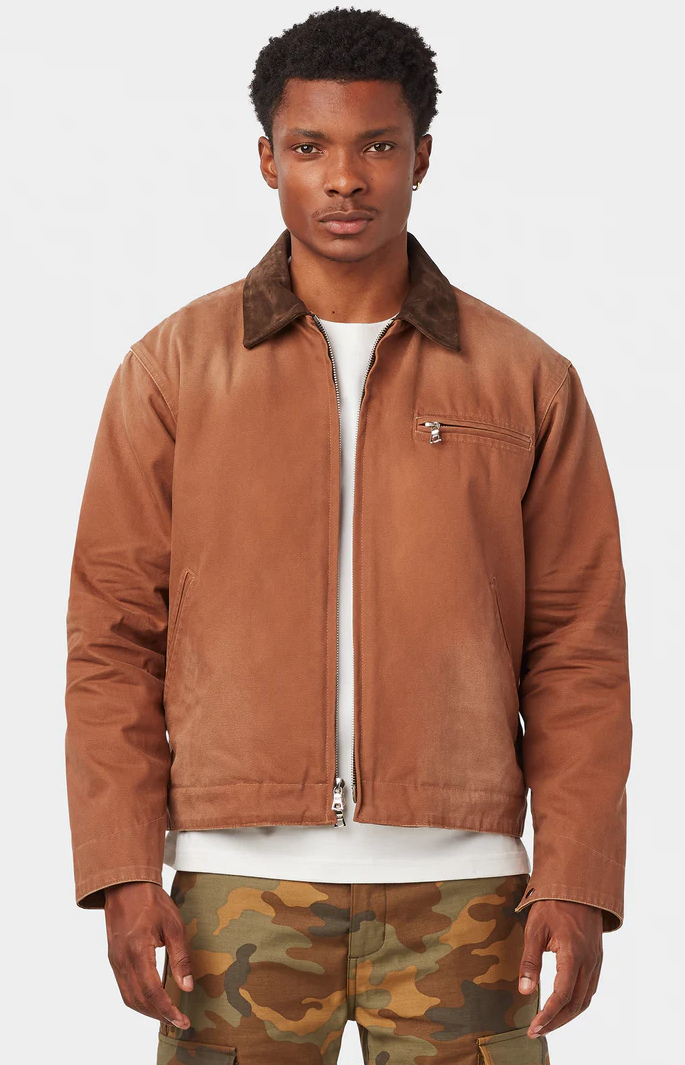
UNIFORM LA CHILLICOTHE WORK JACKET Drop, going on right now.
Uniform LA's Chillicothe Work Jacket is an elevated take on the classic Detroit Work Jacket. Made of ultra-premium 14-ounce Japanese canvas, it has been meticulously washed and hand distressed to replicate vintage workwear that’s been worn for years, and available in three colors.
This just dropped today. If you missed out on the preorder, there are some sizes left, but they won't be around for long. Check out the remaining stock here
Good luck!.
-
STYLE. COMMUNITY. GREAT CLOTHING.
Bored of counting likes on social networks? At Styleforum, you’ll find rousing discussions that go beyond strings of emojis.
Click Here to join Styleforum's thousands of style enthusiasts today!
Styleforum is supported in part by commission earning affiliate links sitewide. Please support us by using them. You may learn more here.
You should upgrade or use an alternative browser.
Discussions about the fashion industry thread
- Thread starter LA Guy
- Start date
- Watchers 358
- Joined
- Mar 8, 2002
- Messages
- 57,593
- Reaction score
- 36,449
Because the duties situation is assymetrical and objectively unfair. The importer and retailer are obligated by law to pay duties on the same item that is exempt from duties when the individual customer buys it.
There is no way to make up for that difference in taxation and not have that result in the death of the price-matching US store. It is basic economics 101 : in a commodities market (interchangeable suppliers) the lower cost supplier will always win.
Many brands are only starting to realize this as their US accounts (like us) tell them: if you're going to let Matches and End and all those guys who are using the tax and duties loophole to dump their product in the US, we won't buy it anymore and you will let your entire US retail network self-destroy. If you're okay with that and the resulting concentration of sales into three mega-UK online monsters, do nothing. If you're not okay, establish simple pricing rules to level the playing field.
This wasn't always the case, as another poster has pointed out, though. It wasn't so long ago that buying from the UK meant that you were going to pay 20% higher than prices in the US, and the Euro and Yen both used to be much stronger compared the USD as well. I can imagine that in the past few years, the strong USD has been a problem for domestic retailers. That said, do you think that carrying desirable US made brands (or US based brands, in any case) would mitigate the "buy overseas" phenomenon? I was talked French retailer who told me that while he sold loads of Visvim to US West Coast customers, but that in return, French customers were buying scads of Converse from US retailers, for exactly the same reasons as US customers buy from abroad.
I don't really know the answer (obviously), but it seems that pricing rules don't really work, an frankly, I don't think that brands can generally handle the additional work of enforcing pricing rules. I can see the brand itself undercutting its own retailers as being a real and tractable problem, but very few brands have the clout and/or muscle to enforce pricing rules.
- Joined
- Jun 9, 2005
- Messages
- 45,634
- Reaction score
- 54,495
Now, "desirable US made brands", that is something we're always in the lookout for. There are few that are not just a designer with relationships with factories in China or Portugal.
- Joined
- Mar 8, 2002
- Messages
- 57,593
- Reaction score
- 36,449
I would guess that a lot of these would be domestic denim brands, which seem to be desirable in both Europe and in Japan. For a lot of these brands, the sportswear is still often made in the China, and the footwear in Portugal, of course.Now, "desirable US made brands", that is something we're always in the lookout for. There are few that are not just a designer with relationships with factories in China or Portugal.
Addressing your point from a few posts ago, I wonder if the real story is not so much the "death of retail", but a much more global consolidation of retail to fewer and fewer mega-online stores? I mean, Mr Porter, for example, sells using US MRSP, and frankly, I don't find prices on End to be particularly attractive except at sales time.
perkyscalling
Senior Member
- Joined
- Jan 31, 2016
- Messages
- 255
- Reaction score
- 197
- Joined
- Feb 11, 2008
- Messages
- 13,078
- Reaction score
- 11,323
Again, going back to our early discussions, I think your best bet is to offer a combination of product and services that doesn't even allow a customer to comparison shop. Stop carrying some stock Craig Green thing. Have him make you a special model in an exclusive fabric. Or modify the design a little. Or frankly carry some other brand that allows you to carve out some other niche. Or whatever. But don't carry some navy jacket that someone is just going to buy from Bulgaria, where they pay sales associates 1/10th of the wages in San Francisco.
@dieworkwear totally agree with this. It's exactly the reason why I exited carrying most 3rd party product. When the exact same merchandise is available at a range of outlets, price will always be the point of difference. And many wholesale brands... particularly ones from Europe.. are not proactive with regulating MSRP across their distributors.
The italicized part, you are going to do a ton of marketing work, and there are two possibilities: 1) The brand will not catch on, and you will take a bath. 2) The brand will catch on, you will reap the rewards for one or two seasons, and then everyone who has read your marketing, read about the brand on Instagram, Styleforum, whatever, will be on that same brand like a fat kid on chips, and your comptetive advantage will be lost. This means that you will have to be doing this in perpetuity, and hope that your skill and luck do not run out, since every miss will mean a loss.
Essentially, no matter whether or not you are going to compete explicitly on price, you will be paying a significant cost. I'm suggesting that maybe it's not so bad to compete on price but try to control it to some degree. It's not the ideal solution, but it may be the optimal one.
@LA Guy This in a way sounds like the original operating plan for Opening Ceremony. Constantly focused on the "new" and bringing unique offerings to the market every season. Oki-Ni in the UK was doing this like a thousand years ago too.
My question then is why the US store has to sell for $1000 out of the gate, instead of $800, like the European retailer (and most of those are out of major European cities)? This includes out of the UK, where a lot of the retailers we talk about are based out of London, a city that has long been notoriously expensive. What is making the US retailer, or at least, certain US retailers, uncompetitive? And who is competitive? And why?
Duty, taxes, and freight cost. Also slightly higher margin requirements versus European retailers, due to a higher expectation of markdowns.
We can use a sportcoat for an example. You pay about 17% duty on a Sportcoat from Italy. On top of that you have a lot of fixed costs to bring it in (international air freight charge, about 100 euro to get the parcel, small fees for terrorism prevention, etc).
So this sportcoat wholesales for 250 eur. Figure that it costs about 315 eur by the time it's in your hands, or 371 USD.
Most luxury retailers (Saks, Barneys, etc) will then mark that up to about $950. That way, when it sells at 25% off, they're still making a decent margin on it. Even if you're not Saks or Barneys, your US sales rep may expect you to maintain that general price level as well.
Now, you've got a European retailer buying that jacket for 250 and putting it online for 600 - 650 euros. It's going to have a VAT charge for EU customers, but that's waived for customers out of the zone. You'll pay a bit for shipping as an end customer, but you won't pay anything on taxes if its less than $800 USD. So you end up with that sportcoat costing $950 in the USA or about $750 direct from Europe. As @gdl203 said... the commercial business is paying a pretty substantial tax on the wholesale goods, while the end customer is often paying nothing. In Europe and Japan, this is not the case.. an end customer will be required to pay a pretty heavy tax on incoming goods from abroad.
- Joined
- Feb 11, 2008
- Messages
- 13,078
- Reaction score
- 11,323
Those models seem to rank superior to fashion's "average joe". I have some friends who buy into the FiveFour subscription service. It's not bad but definitely for guys who wanna look good without the backing of quality products. That facade, if you will, seems to be pervasive right now in men's style.
@perkyscalling definitely, and it seems like FiveFour found the right match. Trunk Club's failure was being too high end, IMO.. but FiveFour is essentially fast fashion, low quality crap at cheap prices. It has wider appeal and they don't offer refunds.
It blows my mind that people buy this, but many guys hate shopping and don't really care about what they wear. Perfect solution to keep them clothed.
- Joined
- Mar 8, 2002
- Messages
- 57,593
- Reaction score
- 36,449
@LA Guy This in a way sounds like the original operating plan for Opening Ceremony. Constantly focused on the "new" and bringing unique offerings to the market every season. Oki-Ni in the UK was doing this like a thousand years ago too.
Oki-ni originally did exclusive collaborations exclusively. Then then closed down, and reopened as a multibrand store.
I know that you do a great job with your branded items. However, there is obviously a strong demand for third party goods. How would you suggest that retailers market those? I mean, we can even take Europe and Japan out of the equation and talk about American brands, like the Vanson example you gave earlier. Yes, a lot of people showroomed that one jacket, but given the high price of Vanson in Europe and Japan compared to US prices, it's a near certainty that a US stockist made that sale off your back. Is it a zero sum game in which certain retailers just have a better internet presence for specific brands and pieces? There are a significant number of other ubiquitous American brands in the same situation. Off the top of my head, Filson, Pendleton, Schott, are carried by stockists throughout the US. Is everyone just selling out of state only? In that case, the only net loser are the individual states.
- Joined
- Feb 11, 2008
- Messages
- 13,078
- Reaction score
- 11,323
Oki-ni originally did exclusive collaborations exclusively. Then then closed down, and reopened as a multibrand store.
I know that you do a great job with your branded items. However, there is obviously a strong demand for third party goods. How would you suggest that retailers market those? I mean, we can even take Europe and Japan out of the equation and talk about American brands, like the Vanson example you gave earlier. Yes, a lot of people showroomed that one jacket, but given the high price of Vanson in Europe and Japan compared to US prices, it's a near certainty that a US stockist made that sale off your back. Is it a zero sum game in which certain retailers just have a better internet presence for specific brands and pieces? There are a significant number of other ubiquitous American brands in the same situation. Off the top of my head, Filson, Pendleton, Schott, are carried by stockists throughout the US. Is everyone just selling out of state only? In that case, the only net loser are the individual states.
@LA Guy good question. Plenty of brands are in that boat, especially footwear. Think about Red Wing, Wolverine, etc.
Honestly, I don't know. There are going to be boutiques with a strong neighborhood presence and a very dedicated customer following who can endure based on good will. Our storefront in Brooklyn certainly had that. Our local customers would buy a Filson bag from us at full price, even knowing that they could save 10% plus the sales tax if they bought it from Filson's site. They liked and wanted to support the store, and that still happens.
The problem is.. those people are coming in less and less to many shops. Online is just a lot easier. And the idea of paying more online.. when you know that there's a cheaper option a click away.. that's a tough pill to swallow, no matter how much you like the retailer in question.
With the loss of foot traffic (that's happening everywhere), the stores that survive have to be good at online sales and social media promotion. If they're carrying something that other vendors have (basic Schott perfecto), then they'll need to compete, and price is always the number one way. Even in our strongest multi-brand years, I never had remarkable sales of any 3rd brand item that wasn't an exclusive (shell cordo Alden makeup that no one else had at that time) or a markdown (CDG Play at 30% off end of season).
happyriverz
Senior Member
- Joined
- Jan 19, 2016
- Messages
- 717
- Reaction score
- 1,419
BLAUGRANA
Distinguished Member
- Joined
- Jun 14, 2012
- Messages
- 1,708
- Reaction score
- 554
@LA Guy good question. Plenty of brands are in that boat, especially footwear. Think about Red Wing, Wolverine, etc.
Honestly, I don't know. There are going to be boutiques with a strong neighborhood presence and a very dedicated customer following who can endure based on good will. Our storefront in Brooklyn certainly had that. Our local customers would buy a Filson bag from us at full price, even knowing that they could save 10% plus the sales tax if they bought it from Filson's site. They liked and wanted to support the store, and that still happens.
The problem is.. those people are coming in less and less to many shops. Online is just a lot easier. And the idea of paying more online.. when you know that there's a cheaper option a click away.. that's a tough pill to swallow, no matter how much you like the retailer in question.
With the loss of foot traffic (that's happening everywhere), the stores that survive have to be good at online sales and social media promotion. If they're carrying something that other vendors have (basic Schott perfecto), then they'll need to compete, and price is always the number one way. Even in our strongest multi-brand years, I never had remarkable sales of any 3rd brand item that wasn't an exclusive (shell cordo Alden makeup that no one else had at that time) or a markdown (CDG Play at 30% off end of season).
Some great stuff and not just in this post. Was thinking yesterday about the duties and other costs of importing. As someone noted with Barbour they seem to be better at getting their stockists overseas to refrain from selling to the US, but that wasn't always the case.
I'm curious about a couple of things that I've noticed and had a few questions. @gdl203 can reply as well.
-Your Filson bag comment got me thinking of this along with my own personal experience. Do you find that with better quality items in general that it may be hurting your traffic and sales? IE someone buys a Filson bag that lasts for years and thus they don't need to shop for that again. Apply that to a jacket, trousers, etc.
-Would you sale that creating your own products or even brand helps to differentiate you from the competition thus helping your business? I would imagine this to be the case along with collaborations like an Alden makeup you don't see anywhere else. I know of two men's stores locally that are similar to a degree, but I wonder how one survives at all. It stocks styles that aren't exclusive to them and that are readily available online. The other however, which is much more established and would be known here, has differentiated itself over time. It carries some brands you can find elsewhere, but it has stocked some brands or pieces that aren't as readily available over here and they've sort of created their own feel.
-Funny you mentioned online and it being easier. I had a friend mentioned that at her hair salon one of the girls mentioned she gets things from Amazon because they have Prime and she can get it so fast. What strikes me about Amazon after a quick browse is they have pretty much nothing worthwhile. At least on the men's side. I noticed Jack Spade. Not really my thing, but being familiar with the brand I was curious as to the pricing. Before even checking the Jack Spade site I could tell prices at Amazon were higher. It also said order would be sold and fulfilled by Amazon. I did still check Jack Spade's site and it was cheaper across the broad and with free shipping, free returns and better selection.
-Do you find that people are more likely to buy something at a % discount off even if it's more expensive than a straight markdown? IE you've got a jacket which fat full retail is $900 and it will sell better at $799 and 40% (so $480) vs just marking it down to $449. That's my experience with friends who don't do the simple math. In fact I've seen it in stores where the sales associate is trying to convey this to the customer who still doesn't get it.
OccultaVexillum
Stylish Dinosaur
- Joined
- Aug 1, 2013
- Messages
- 10,969
- Reaction score
- 12,226
He keeps a limited number of stockists, you have to be approved to sell things online, and you are not allowed to sell/ship product outside of your region.
It makes it hard to buy for people outside of major stockists, and things still go on sale obviously, but it helps keep his line desirable and (I imagine) keeps down on discount warfare.
- Joined
- Apr 10, 2011
- Messages
- 27,320
- Reaction score
- 69,987
So should everybody operate the same way as Dries does?
He keeps a limited number of stockists, you have to be approved to sell things online, and you are not allowed to sell/ship product outside of your region.
It makes it hard to buy for people outside of major stockists, and things still go on sale obviously, but it helps keep his line desirable and (I imagine) keeps down on discount warfare.
Could do the Cucinelli strategy, which is to sell a solitary beige crewneck sweater per season for $$$$$$ and be done with it.
- Joined
- Feb 11, 2008
- Messages
- 13,078
- Reaction score
- 11,323
Do you find that with better quality items in general that it may be hurting your traffic and sales? IE someone buys a Filson bag that lasts for years and thus they don't need to shop for that again. Apply that to a jacket, trousers, etc.
Not really... in fact it may be the opposite scenario for clothing and footwear. Once someone gets a great quality pair of trousers or boots, they tend to want a lot more.
-Would you sale that creating your own products or even brand helps to differentiate you from the competition thus helping your business?
Absolutely, and I think that it's becoming pretty crucial for survival. If not your own brand, then at least a range of exclusive items.
-Funny you mentioned online and it being easier. I had a friend mentioned that at her hair salon one of the girls mentioned she gets things from Amazon because they have Prime and she can get it so fast. What strikes me about Amazon after a quick browse is they have pretty much nothing worthwhile. At least on the men's side. I noticed Jack Spade. Not really my thing, but being familiar with the brand I was curious as to the pricing. Before even checking the Jack Spade site I could tell prices at Amazon were higher. It also said order would be sold and fulfilled by Amazon. I did still check Jack Spade's site and it was cheaper across the broad and with free shipping, free returns and better selection.
Agreed with that... in terms of the menswear that we (Styleforum) like, there's not much to choose from on Amazon. And I find the search function to be really difficult. But outside of "our thing" they're definitely selling a lot of clothing and footwear to a lot of people, and taking a huge bite of the volumes formerly done by B&M stores.
-Do you find that people are more likely to buy something at a % discount off even if it's more expensive than a straight markdown? IE you've got a jacket which fat full retail is $900 and it will sell better at $799 and 40% (so $480) vs just marking it down to $449. That's my experience with friends who don't do the simple math. In fact I've seen it in stores where the sales associate is trying to convey this to the customer who still doesn't get it.
Yes, I'd agree with that. It's human nature to want a discount and "believe" the original tagged price. Sites like Gilt took advantage of this. Mass retailers are aware that many customers will not purchase without a perceived discount and they price goods accordingly. I did this at Saks. We'd pay $50 for a cashmere scarf and make it $350 original retail. That way, it gets marked down to $195 at Black Friday and everyone feels like they're getting an enormous deal. All that they're doing is paying the typical markup. It's a head game. If some units sell at the inflated full price... well that's just a bonus.
So should everybody operate the same way as Dries does?
He keeps a limited number of stockists, you have to be approved to sell things online, and you are not allowed to sell/ship product outside of your region.
It makes it hard to buy for people outside of major stockists, and things still go on sale obviously, but it helps keep his line desirable and (I imagine) keeps down on discount warfare.
@OccultaVexillum I think that European brands are slowly catching onto this. They were quite behind on the curve on e-commerce, and I don't believe that many of them processed the impact that online shopping would have on their US sales.
Alden does this in the opposite direction. Alden footwear is radically more expensive in Europe and Asia, primarily due to import taxes. End customers in these regions can certainly save quite a bit if they buy online from a US retailer.. especially if that retailer is willing to mark down the customs declaration. But Alden forbids US-based retailers from shipping outside of North America.
The reason is because they believe that there's a value in having Alden products physically present at storefronts. For all of the online Alden fans, there's many guys who simply won't spend that money without first seeing the item in person. Or first-time customers who become introduced to the brand by seeing it in a store. These stores need to sell a certain volume in order to justify the cost of holding all the stock (multiple styles, sizes, colors), so Alden is conscious to shield them as much as possible from impossible price competition.
I've dropped quite a few European labels from my assortment for not doing this. Admittedly I'm more hardcore than most retailers about this stuff, but value for dollars is one of our defining characteristics, and I won't carry anything if I can't be reasonably competitive with it at all points.
Could do the Cucinelli strategy, which is to sell a solitary beige crewneck sweater per season for $$$$$$ and be done with it.
@dieworkwear LOL, why didn't I think to use this strategy! Keep an eye out for my $20,000 cashmere chino. I just need five customers a month!
Streetwear Featured products
-
 Wellington Chore Boot - Special Introductory Price! $495 Introducing the latest addition to Nicks Handmade Boots collection: The Wellington Chore Boot. Engineered for the rigors of daily tasks, this boot is more than just footwear; it's a reliable companion for your everyday adventures. Crafted with convenience in mind, its effortless pull-on design ensures you're always ready to tackle whatever the day throws your way.
Wellington Chore Boot - Special Introductory Price! $495 Introducing the latest addition to Nicks Handmade Boots collection: The Wellington Chore Boot. Engineered for the rigors of daily tasks, this boot is more than just footwear; it's a reliable companion for your everyday adventures. Crafted with convenience in mind, its effortless pull-on design ensures you're always ready to tackle whatever the day throws your way. -
T-shirts Uncovered: UNIFORM/LA - Vintage Black Crew Neck T-shirt - $54 This Made-in-USA tee blends the classic 80s band look with a modern, work-friendly twist. Feel the comfort, embrace the vintage vibes, and bring a little rock ‘n’ roll to your everyday wardrobe.
-
T-shirt Uncovered: UNIFORM/LA - Heavyweight Artist Tee - $64 Crafted with creativity in mind—this heavyweight tee is the canvas for your imagination. Made in the USA with 12.5 oz of premium supima cotton, it’s the perfect choice for those who turn inspiration into art.
Latest posts
- Replies
- 12,409
- Views
- 1,548,495
- Replies
- 15,013
- Views
- 1,159,976
- Replies
- 5,892
- Views
- 504,085
- Replies
- 9,210
- Views
- 519,731
- Replies
- 927
- Views
- 324,341
Similar threads
- Replies
- 1
- Views
- 6,300
- Replies
- 18
- Views
- 14,880
- Replies
- 297
- Views
- 50,497
- Replies
- 17
- Views
- 3,907
Featured Sponsor
Forum Sponsors
- American Trench
- AMIDÉ HADELIN
- Archibald London
- The Armoury
- Arterton
- Besnard
- Canoe Club
- Capra Leather
- Carmina
- Cavour
- Crush Store
- De Bonne Facture
- Drinkwater's Cambridge
- Drop93
- eHABERDASHER
- Enzo Custom
- Epaulet
- Exquisite Trimmings
- Fils Unique
- Gentlemen's Footwear
- Giin
- Grant Stone
- House of Huntington
- IsuiT
- John Elliott
- Jonathan Abel
- Kent Wang
- Kirby Allison
- Larimars Clothing
- Lazy Sun
- LuxeSwap
- Luxire Custom Clothing
- Nicks Boots
- No Man Walks Alone
- Once a Day
- Passus shoes
- Proper Cloth
- SARTORIALE
- SEH Kelly
- Self Edge
- Shop the Finest
- Skoaktiebolaget
- Spier and MacKay
- Standard and Strange
- Bespoke Shoemaker Szuba
- Taylor Stitch
- TLB Mallorca
- UNI/FORM LA
- Vanda Fine Clothing
- Von Amper
- Wrong Weather
- Yeossal
- Zam Barrett
Members online
- apolloali
- Buck McFate
- _AMD
- dme2406
- Jr Mouse
- __PG__
- Chegueverawang
- soender
- jbe90
- wklq76a
- aph999
- PGS
- knitsandlifts
- hendrix
- Gibonius
- threeleggeddog
- MKYG12345
- MrImpractical
- JayDotz
- Fenners81
- mogili222
- pongpisit
- Lkeck3
- moocow
- jazerad
- Sartoriamo
- stephenaf2003
- TheODGuy
- oudwood
- WhyUEarly
- VaderDave
- Montaigne
- malcb33
- natedaniels
- Ashen
- owenshill
- Conan04
- howardeb
- adamdurbin
- Ace_Face
- throbgorkas
- lagsun
- ellsbebc
- Shoenut
- iouah
- casterofdreams
- ianGP
- Johnny80
- voxthriftstoria
- khanew997
